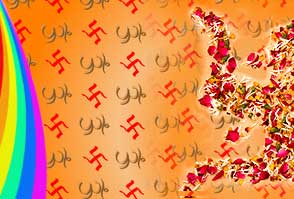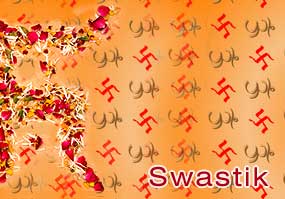Swastika symbol has much more relevance and
significance in the Jain religion as compared to the Hindu religion. In
Jainism, Swastika represents the Seventh Jina, more popularly known as
the Tirthankara Suparsva. It is one of the most prominent auspicious
symbols of the present era. In the cultural traditions of Svetambar
Jains, Swastika is one of the main symbols of the ashta-mangalas. Read
further to know the exact meaning and importance of Swastik in the Jain
religion.
All the holy books of Jains have Swastika imprinted on them. Swastik can
be seen in all the Jain temples. Each of the ceremonies of Jains begins
with the creation of Swastik symbol numerous times around the altar.
Jains make Swastik marks with rice in front of the images of deities in
the temple. Swastik drawing is commonly referred to as Swastik rangoli.
On completion of Swastik rangoli, Jains usually make an offering; which
primarily consists of a fruit, dried fruit, sweet and sometimes a
currency note.
In Jainism, Swastika has lot of importance, as it is the emblem of their
seventh Tirthankara (saint). In the year 2001, the Government of India
issued a 100-rupee coin to celebrate the 2600th anniversary of the birth
of Mahavir, the 24th and last Jainist Tirthankara. The coin had the
Swastika design on it. In the Jain religion, it is said that the
Swastika denotes the four possible places of rebirth, namely heaven,
hell, earth and animal or plant world.







